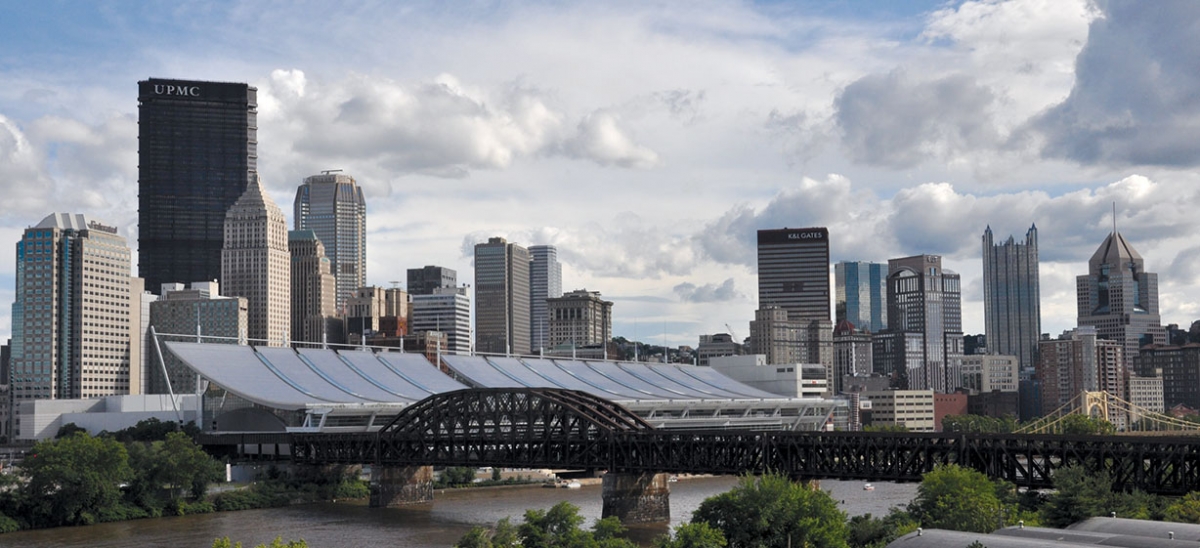
This fall is an exciting time at Pittsburgh Quarterly and in Pittsburgh. In its Golden Quill Awards in May, the Press Club of Western Pennsylvania judged PQ to be the region’s best magazine for the seventh straight year. And I believe that this issue contains the strongest combination of stories we’ve ever produced—stories that reflect a dramatic season in the history of Pittsburgh.
The Pirates are baseball’s most exciting team. Football is in the air, with Pitt joining the ACC and a new Steelers team taking the field. This fall, Pittsburgh will host the Pittsburgh International Festival of Firsts, the Carnegie International and the international Remaking Cities Congress. And in November, Pittsburgh will elect a new mayor. Beyond those events, however, we may be on the verge of something much bigger.
At a time when national leadership is paralyzed, cities are emerging as the best hope for solving difficult problems. And with our famed transition largely accomplished, Pittsburgh is now playing from a position of unparalleled strength. Thanks to a rare combination of ingredients, the constellations are aligned for Pittsburgh to provide a model for the world.
We have water, energy, excellent institutions and some unusual intangibles.
Among Americans, we Pittsburghers are relative anomalies. We don’t just exist as individuals. Aside from the usual identities —family, religion, job, interests and net worth—we have a civic identity. More than in other cities, we feel we are part of something greater: Pittsburgh. In my 28 years of journalism here, much of it spent comparing American cities, the most salient insight I’ve gleaned is that the social fabric here is more intact than in other places. It’s due to a combination of history, geography, size, migration patterns, industrial mix and philanthropy. You see it most plainly in Steeler Nation and our love of parades, but that social fabric also underlies our low crime rate—people here commit fewer crimes because they’re more connected. In short, we care more about our city and our place in it, and we believe our efforts make a difference in its future.
Add a few more mosaic pieces, and a portrait of possibility emerges.
With Bill Peduto’s expected November election win, the city will have new vitality and vision. Combine that with Rich Fitzgerald at the helm of Allegheny County, and a new era of public leadership and progress is arriving.
We have uniquely capable and committed leadership at our philanthropic foundations—the not-so-secret weapon that differentiates Pittsburgh from every other city. We have strong and diversified business, medical and university communities, and we’re seeing a flowering of grass-roots civic efforts.
With these assets, we need to recognize the historic opportunity in our hands and grab it. We can launch a trajectory for Pittsburgh that leads far into the current century and well beyond our own years. Here is a short-term to-do list:
- Welcome new Carnegie Mellon President Subra Suresh and Mark Nordenberg’s future successor at Pitt and foster a new generation of academic and civic leadership building on the outstanding pattern woven by Nordenberg and CMU’s Jerry Cohon.
- Convince our legislative delegates in Harrisburg to see this region—and not their political parties—as their chief allegiance and help them create long-term funding for our roads, bridges and public transit.
- Protect our environment and seize the opportunity to make Pittsburgh an international example of harnessing natural gas in civic projects that improve our environment and our economy.
- Increase Pittsburgh’s diversity and immigration, improve the quality of life for our African American citizens, and reduce the dropout rates in our urban schools.
Pittsburgh is an anomaly. With our brainpower, wealth, civic commitment, and tradition of innovation, no city is better poised to solve its problems, improve the lives of its citizens and welcome new ones. And if we succeed, Pittsburgh can become—in reality and perception—the finest city in the world.


